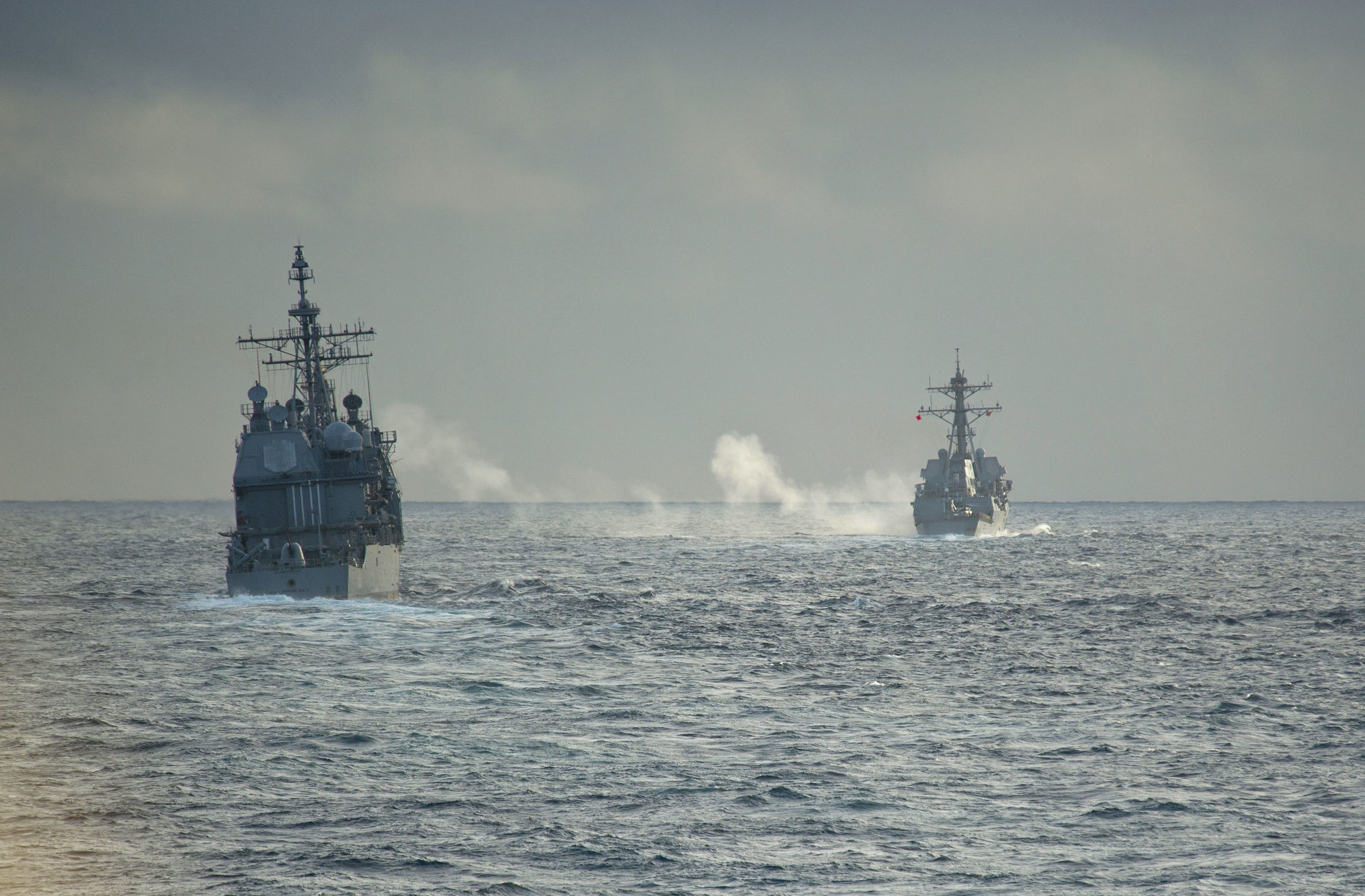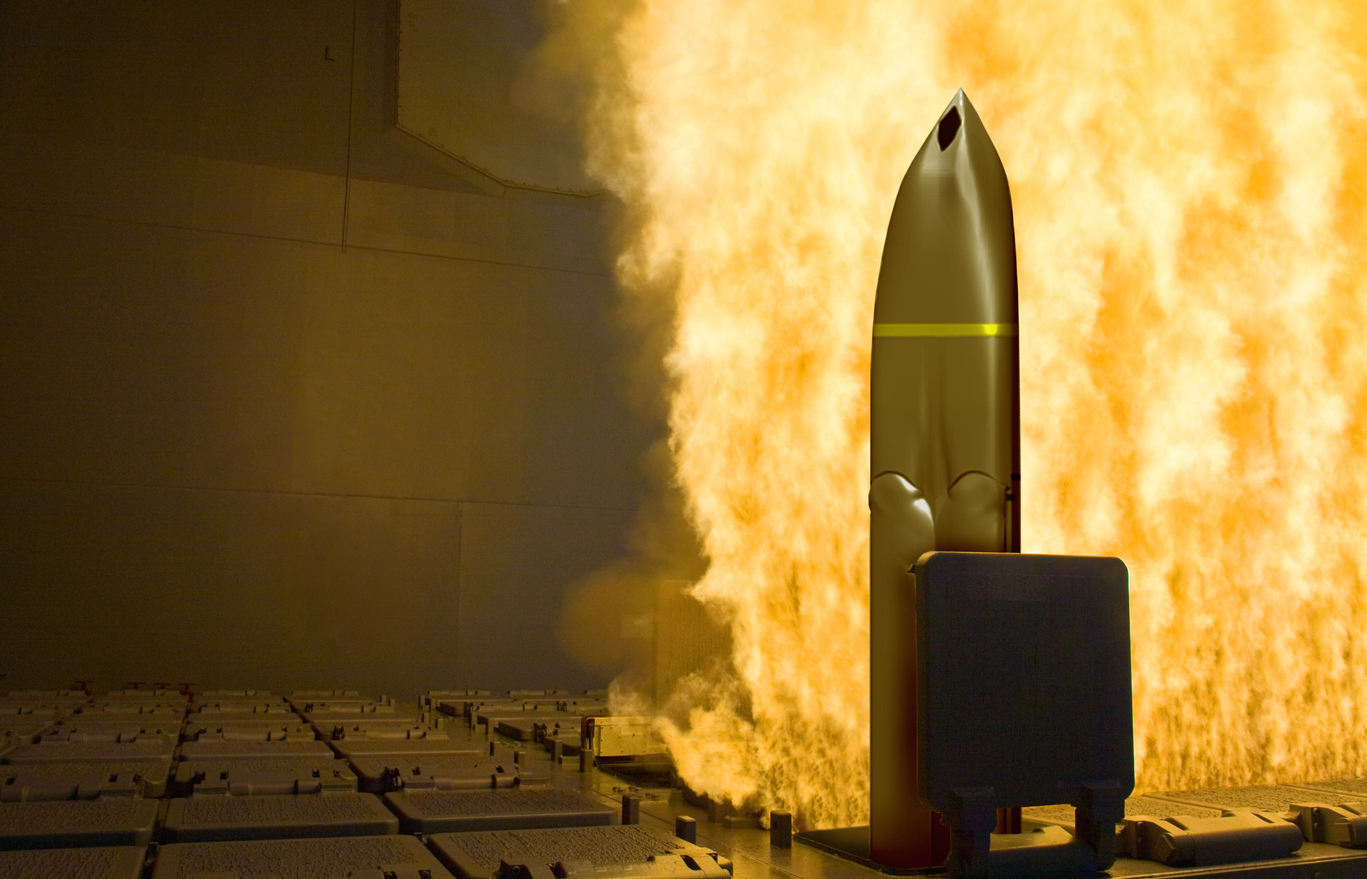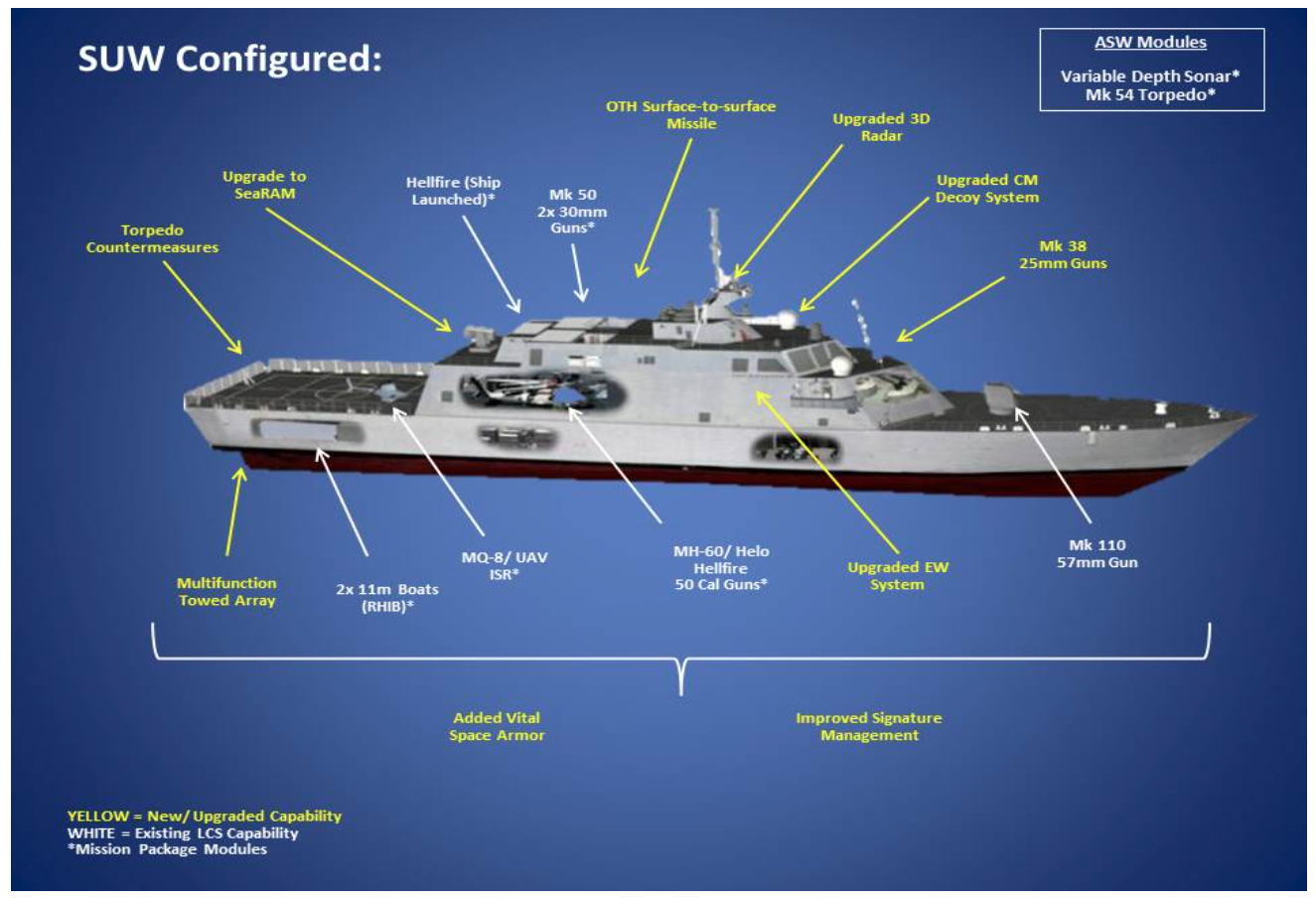
CRYSTAL CITY, VA. — The leaders of the U.S. Navy’s surface force are pitching a new philosophy to squeeze the offensive power out of its existing surface ships in a tactical shift that calls for using small surface action groups and increasing the number of anti-ship weapons on more platforms in a plan branded, “distributed lethality.”
For almost 15 years, U.S. surface forces have primarily been employed as air defense elements for carrier strike groups (CSG), strike platforms for land attack and as ballistic missile defense (BMD) ships. All while the anti-surface mission has not been a priority in tactically and in acquisition spheres.
What the distributed lethality concept – outlined by U.S. Surface Forces commander Vice Adm. Thomas Rowden and director of surface warfare Rear Adm. Peter Fanta – seeks to bring to the surface forces is an emphasis on an anti-surface and anti-submarine warfare (ASW).
The pair and U.S. Surface Atlantic commander (SURFLANT), Rear Adm. Peter Gumataotao wrote on the concept in the January issue of Proceedings.
“Distributed lethality is taking the budget that we have and making everything out there that floats more lethal. Making the trades that we need to make and making the surface navy of the next ten years, or 20 years the most lethal we can,” Fanta said on Tuesday at the Surface Navy Association 2015 symposium.
“[I want to] make every cruiser, destroyer, [amphibious warships], [Littoral Combat Ship], [logistics ship] a thorn in somebody else’s side.”
Part of the concept would codify in training and tactics three to four ship “hunter killer surface action groups,” Rowden told reporters on Wednesday.
The idea is to expand the geographical influence of surface forces beyond the current model based around supporting and protecting aircraft carriers.

“You have a carrier strike group that’s out steaming around the ocean — which is not an inexpensive thing to operate at significant range,” Rowden told reporters.
“If I can move three or four or five surface action groups and I force that adversary to devote their intelligence, surveillance and reconnaissance (ISR) on all of those and dilute their targeting ability and their weapons and I have the capabilities to: to defend myself against subsurface, air and surface attack and influence at range, so putting their forces at risk in a cost effective fashion.”
However, details and timelines on how the surface forces will train to the concept or what specific acquisitions program are needed to realize the vision are still in the works.
“This is an idea to get to the future,” Rowden told reporters.
“I can’t say, ‘by May I’m going to be rolling this out, by July I’m going to be briefing these people, by this time next year I’m going to pull back the curtain and say, here it is’ everybody – the future.”
An obvious gap in the distributed lethality concept is the lack of a modern anti-surface weapon. The U.S. Navy’s anti-surface missile (ASM) is the decades-old subsonic RGM-84 Harpoon anti-ship missile (ASM) and isn’t included in the Navy’s most modern destroyers.

DARPA is currently developing a the vertically launched Long Range Anti-Ship Missile (LRASM) – based on the Lockheed Martin AGM-158B Joint Air-to-Surface Standoff Missile-Extended Range cruise missile – and has tested the Kongsberg Naval Strike Missile on a Littoral Combat Ship (LCS).
Additionally, “we are actively pursuing an analysis of alternatives for a long-range ASUW weapon,” Rowden told reporters.
In the shorter term, the Navy is looking at current inventories and existing foreign systems to meet the eventual demand for the concept.
“If I need a new weapon system, I don’t go spend ten years developing it.
I go take a seeker – if that’s my problem – and I glue it on the front end of an existing missile. If it doesn’t go far enough, I put a new backend on it. If someone around the world is already flying it, I go buy it. If someone else in the world has a PowerPoint description of it and says ‘I can get that for you,’ I ignore it,” Fanta said.
“PowerPoint doesn’t win wars.”
Fanta used an example of including a off-the-shelf radar on the MQ-8B Fire Scout unmanned rotary-wing unmanned aerial vehicle (UAV) as an example.
Also inline with the concept is the inclusion of the Longbow AGM-114L Hellfire missile as short-range weapon to used against fast attack and swarming boats on the LCS Surface Warfare Mission package. The Navy bought the missiles from the Army for inclusion on the package avoiding an acquisition competition.
In addition to a new surface offensive weapon, the effort will also look at an ASW capability.
“We need to do the same thing in understanding how to engage in the undersea domain at range,” Rowden said.

An ASW focus will be part of the 20 planned modified LCS concept the Navy introduced in December.
“You add is a variable depth sonar and when you add that in conjunction with a multi-function towed array, you have the most effective ASW sensor platform in the Navy,” Sean Stackley, Assistant Secretary of the Navy for Research, Development & Acquisition (RDA) said in December.
“You add to that a helicopter with its torpedo capability, now you have a detect and kill capability unlike any other platform in the Navy.”
Fanta, who was involved in the selection process for the follow-on to the Flight 0 LCS said there was significant demand from the fleet for more ASW capability.
“They said we want a small surface combatant that does a lot of ASW work,” he said.
Though both Fanta and Rowden were generic as to likely adversaries, the hunter killer surface action group seems like a offensive power solution as part of the Obama administrations pivot to the Pacific policy and a change in tone for the Navy’s stated mission.
The more aggressive language toward potential adversaries is a shift in a rhetorical emphasis from building partner capacity, which led to polices like retired Chairman of the Joint Chiefs of Staff and Chief of Naval Operations Adm. Mike Mullen’s 1000 ship navy,” concept.
In the near term, Rowden said the Navy’s surface enterprise will continue to develop the concepts and how to train for the inclusion of the surface action group concept into the operational fleet and also figure out an acquisition strategy for what they may need to see the concept to implementation.
“We have to understand fundamentally from the tactical and operational perspective the influence these hunter killer surface action groups will have and the type of influence that we require of them,” Rowden said.
“We’re in the military. We have a tendency to like to blow thins up. But the fact of the matter is, from my perspective there is a significant amount that we can do, for lack of a better way to describe it, to change the rules in the middle of the game.”





